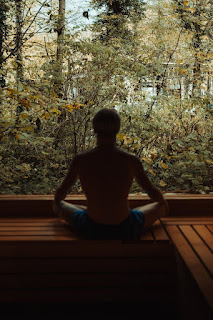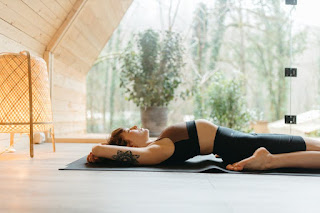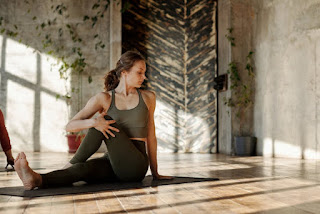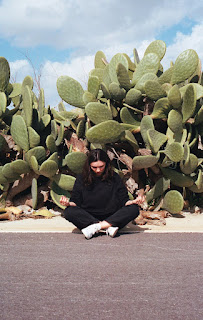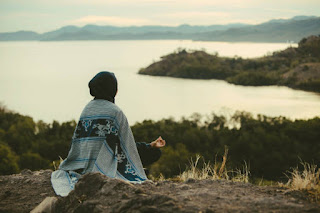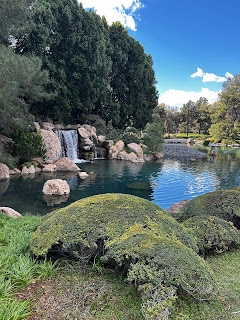Integrating Strength, Flexibility, and Balance: Adaptive Yoga Flow
Integrating Strength, Flexibility, and Balance: Adaptive Yoga Flow
Yoga is a practice that harmonizes the mind and body by blending strength, flexibility, and balance. These three components are essential for maintaining overall health and well-being, especially for those seeking gentle, adaptive practices. For individuals with limited mobility or those looking for a seated alternative to traditional yoga, an adaptive yoga flow provides an opportunity to integrate these core elements in a safe and supportive way.
In this article, we’ll explore an adaptive yoga flow that focuses on bringing together strength, flexibility, and balance in a seamless practice. Each pose is carefully selected to create a flow that enhances your body’s capabilities while remaining gentle and accessible. Let’s get started.
The Power of Integrating Strength, Flexibility, and Balance
The beauty of yoga lies in its ability to address multiple aspects of physical fitness simultaneously. Strength provides stability, flexibility allows ease of movement, and balance ensures coordination and control. When these three components are integrated into a yoga practice, they complement each other to create a holistic approach to well-being.
An adaptive yoga flow helps you cultivate strength through controlled movement, develop flexibility by gently stretching the muscles, and improve balance by engaging your core and focusing on alignment. This balance of elements not only strengthens the body but also enhances mental clarity and focus.
Adaptive Yoga Flow for Strength, Flexibility, and Balance
The following flow can be done in a seated position using a sturdy chair without arms. Each pose is designed to flow into the next, creating a rhythm that supports the integration of strength, flexibility, and balance. Be sure to sit tall with your feet flat on the floor and engage your core throughout the practice.
Seated Mountain Pose with Arm Lift (Tadasana Variation)
How to Perform:
- Begin by sitting tall with both feet firmly planted on the floor.
- Inhale deeply and reach your arms overhead, palms facing each other.
- Press down through your feet and engage your core, lifting your chest and lengthening your spine.
- Hold for 3-4 breaths, feeling the stretch through your arms and the engagement of your core.
Mental Picture:
Imagine yourself as a sturdy mountain, rooted into the earth through your feet, while your upper body stretches toward the sky. Feel the strength rising from your legs, through your core, and out through your fingertips as you hold this pose.
Why It Works:
This pose creates a strong foundation, building strength in the legs and core while stretching the arms and shoulders. It sets the stage for the integration of balance and flexibility as you flow through the rest of the practice.
Seated Chair Pose (Utkatasana)
How to Perform:
- With your feet flat on the floor and knees bent, sit tall and reach your arms forward, palms facing down.
- Engage your core and imagine lifting slightly out of the chair as you press down through your feet, even though you remain seated.
- Hold for 3-5 breaths, feeling the strength in your thighs and core.
Mental Picture:
Picture yourself hovering just above the chair, your legs strong like pillars holding you steady. Your core is activated, and your arms reach forward as though balancing an invisible weight, bringing awareness to your posture and strength.
Why It Works:
Seated Chair Pose strengthens the thighs, hips, and core, mimicking the feeling of a traditional standing chair pose while offering stability through the chair. It challenges the muscles needed for balance and control, enhancing body awareness.
Seated Crescent Moon Side Stretch (Chandrasana Variation)
How to Perform:
- From your seated position, inhale and raise your right arm overhead.
- Exhale and gently lean to the left, reaching your right arm across your body while your left hand rests on the chair for support.
- Hold for 3-4 breaths, feeling the stretch along the side of your body, then repeat on the other side.
Mental Picture:
Imagine yourself as a crescent moon, gracefully curving to the side. Feel the stretch from your hip to your fingertips as your body bends like a soft arc. Your breath deepens, creating space in your ribs and side muscles.
Why It Works:
This stretch enhances flexibility in the spine, ribcage, and side body. By engaging your core as you lean, you also improve balance and control, supporting both stability and range of motion.
Seated Warrior I Arms (Virabhadrasana I Variation)
How to Perform:
- Sit tall with your feet flat on the floor, hip-width apart.
- Inhale and reach both arms overhead, palms facing inward.
- Keep your chest lifted and your core engaged as you press down through your feet, feeling the strength in your legs.
- Hold for 3-5 breaths, then slowly lower your arms.
Mental Picture:
Picture yourself as a focused warrior, your arms strong and steady overhead like the tip of a spear. Your feet are grounded, but your upper body feels powerful and expansive. With each breath, you harness the energy of strength and stability.
Why It Works:
Seated Warrior I arms build upper body strength while reinforcing a strong core. The raised arms engage the shoulders and back, while the seated position allows you to focus on balance and posture without the pressure of standing.
Seated Figure Four Stretch (Eka Pada Utkatasana)
How to Perform:
- Sit on the edge of your chair with your feet flat on the floor.
- Lift your right ankle and place it across your left knee, creating a figure-four shape with your legs.
- Sit tall and gently press your right knee down to deepen the stretch in your hip.
- Hold for 3-5 breaths, then switch sides.
Mental Picture:
Visualize your body like a woven figure four, your right leg creating a gentle fold over the left. As you press your knee down, feel the tension in your hip release, like opening a hinge to allow for greater freedom of movement.
Why It Works:
This pose focuses on flexibility by stretching the hips and glutes, areas that are often tight from prolonged sitting. It also engages the core to maintain balance and upright posture, integrating both flexibility and strength.
Seated March with Opposite Arm Lift
How to Perform:
- Sit tall with your feet flat on the floor.
- Inhale and lift your right knee toward your chest while simultaneously raising your left arm overhead.
- Exhale and lower both your arm and leg, then repeat on the opposite side.
- Continue alternating for 8-10 repetitions, moving with control.
Mental Picture:
Picture yourself marching in a slow, rhythmic dance, your limbs moving in perfect synchronization. With each lift, feel the coordination between your legs and arms, creating a flowing, balanced movement.
Why It Works:
This movement enhances coordination and balance by engaging both sides of the body in opposite motions. It strengthens the core and legs while promoting a smooth, controlled flow of movement, which is essential for balance.
Seated Twist with Arm Extension (Parivrtta Sukhasana Variation)
How to Perform:
- Sit tall with your feet flat on the floor.
- Inhale and extend your right arm forward while your left hand rests on your right thigh.
- Exhale and gently twist to the right, extending your right arm behind you as far as is comfortable.
- Hold for 3-4 breaths, then return to center and repeat on the opposite side.
Mental Picture:
Visualize your spine twisting like a spiraling vine, slow and graceful. As your arm extends behind you, feel your chest opening, your core engaging to support the twist. Your breath helps deepen the rotation, creating a sense of space and fluidity.
Why It Works:
This seated twist improves flexibility in the spine and enhances balance by requiring core engagement to maintain an upright posture. The extended arm adds an element of strength as it stretches the shoulders and chest.
Bringing It All Together: Creating a Gentle Yoga Flow
By integrating these poses into a smooth sequence, you create a gentle yet effective yoga flow that addresses strength, flexibility, and balance in a unified practice. The transitions between poses are slow and mindful, allowing you to connect your breath with your movements.
- Start with Seated Mountain Pose to ground yourself and establish strength.
- Flow into Seated Chair Pose to engage your core and legs.
- Transition to Crescent Moon Side Stretch to enhance flexibility in the side body.
- Move into Seated Warrior I Arms for upper body strength and balance.
- Follow with Seated Figure Four Stretch to improve hip flexibility.
- Add the Seated March with Opposite Arm Lift to engage coordination and balance.
- Finish with the Seated Twist with Arm Extension to release tension in the spine and improve flexibility.
Conclusion
An adaptive yoga flow that integrates strength, flexibility, and balance can transform both your body and mind. By practicing these gentle movements, you’ll develop a deeper connection with your body, improving not only physical fitness but also mental focus and clarity.
Whether you’re new to yoga or have limited mobility, this flow is designed to be accessible, allowing you to experience the benefits of yoga without the need for floor work or standing poses. Embrace the flow, listen to your body, and enjoy the harmony that comes from integrating strength, flexibility, and balance.
